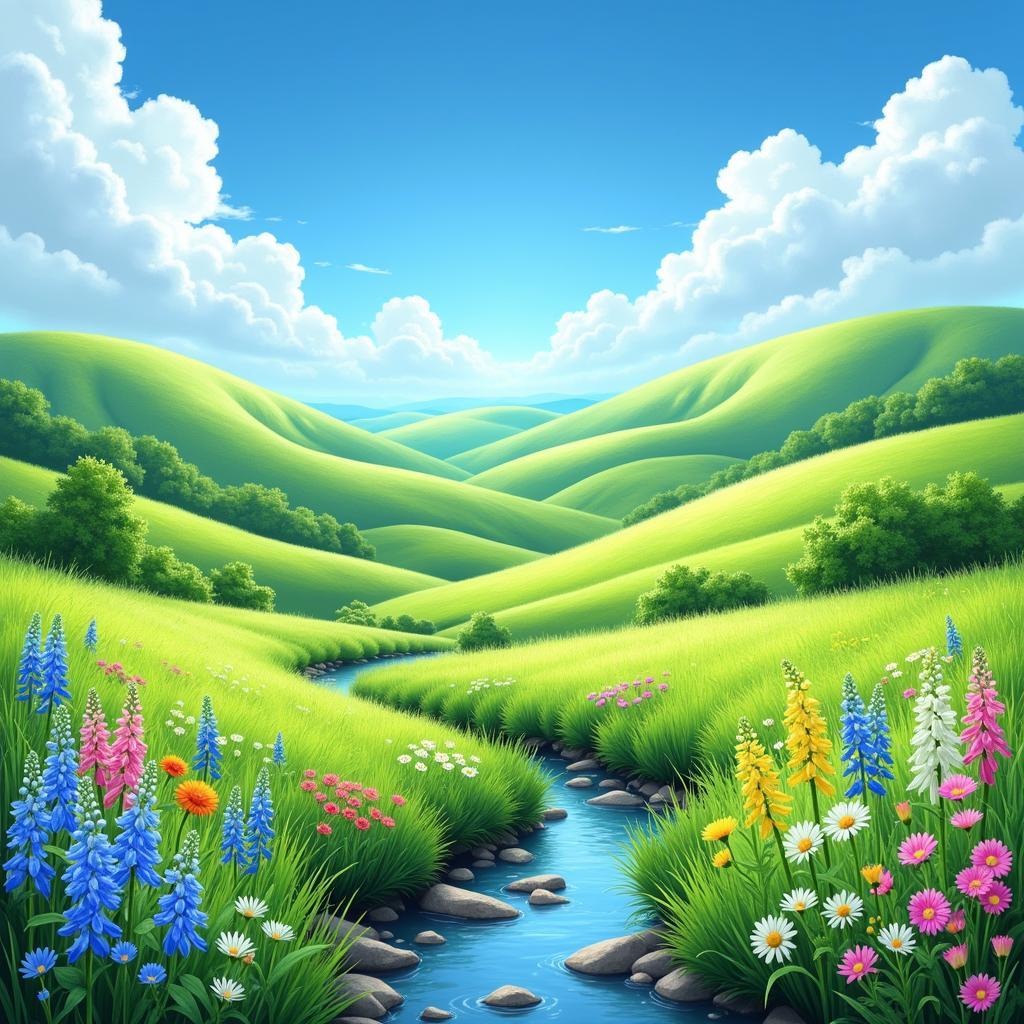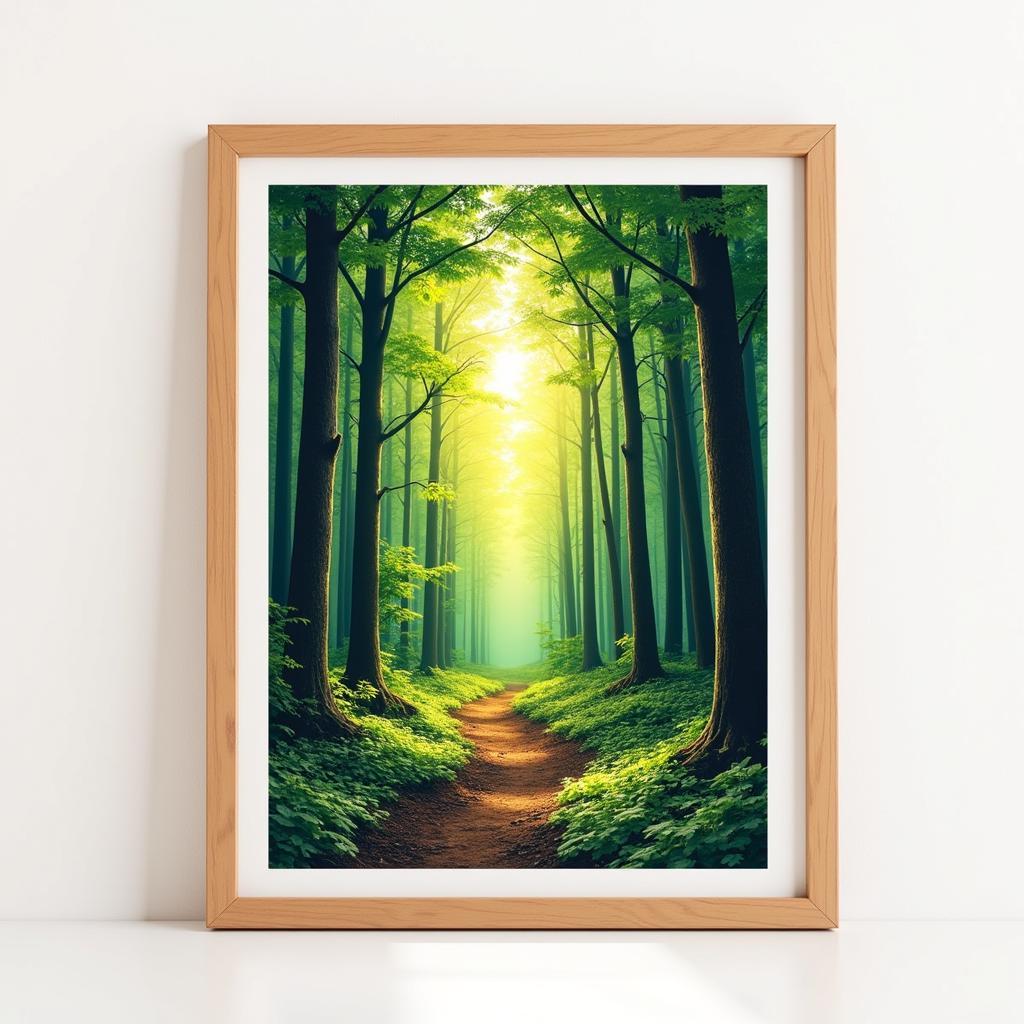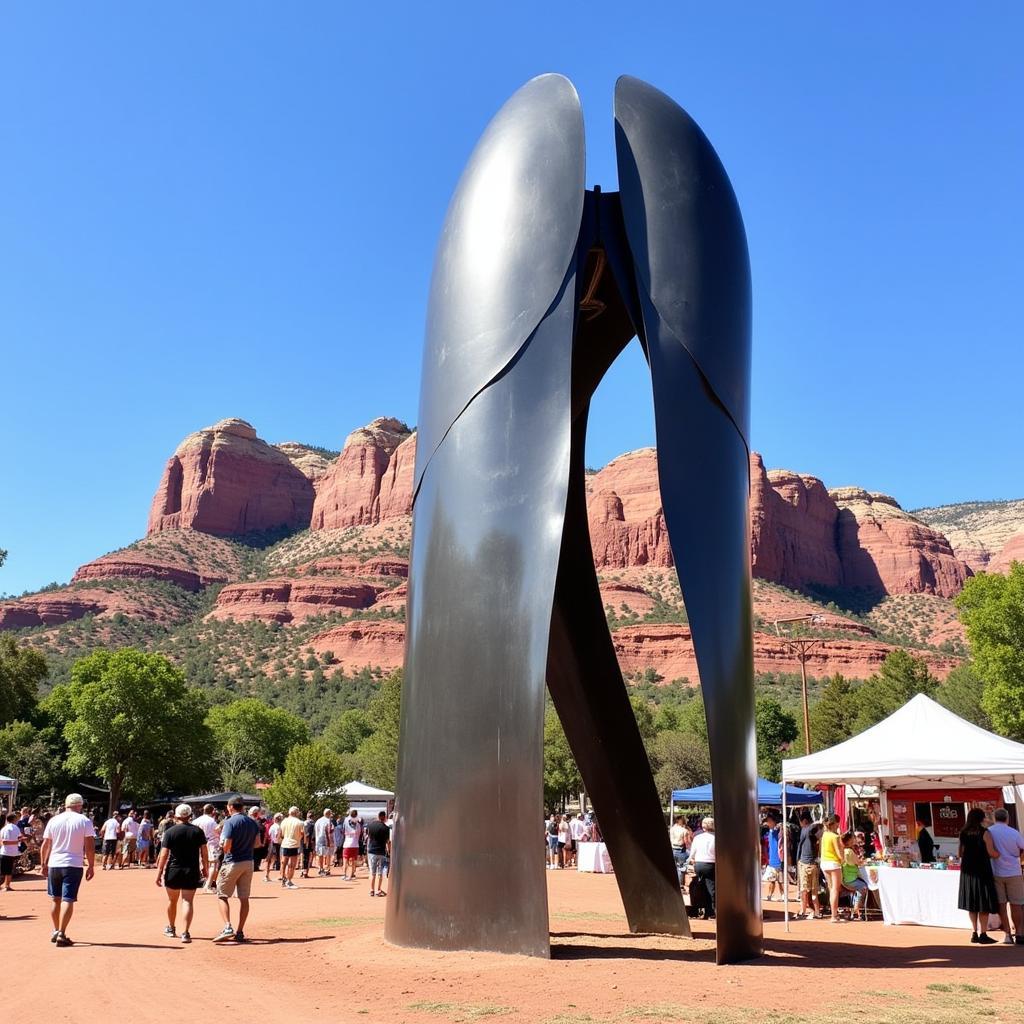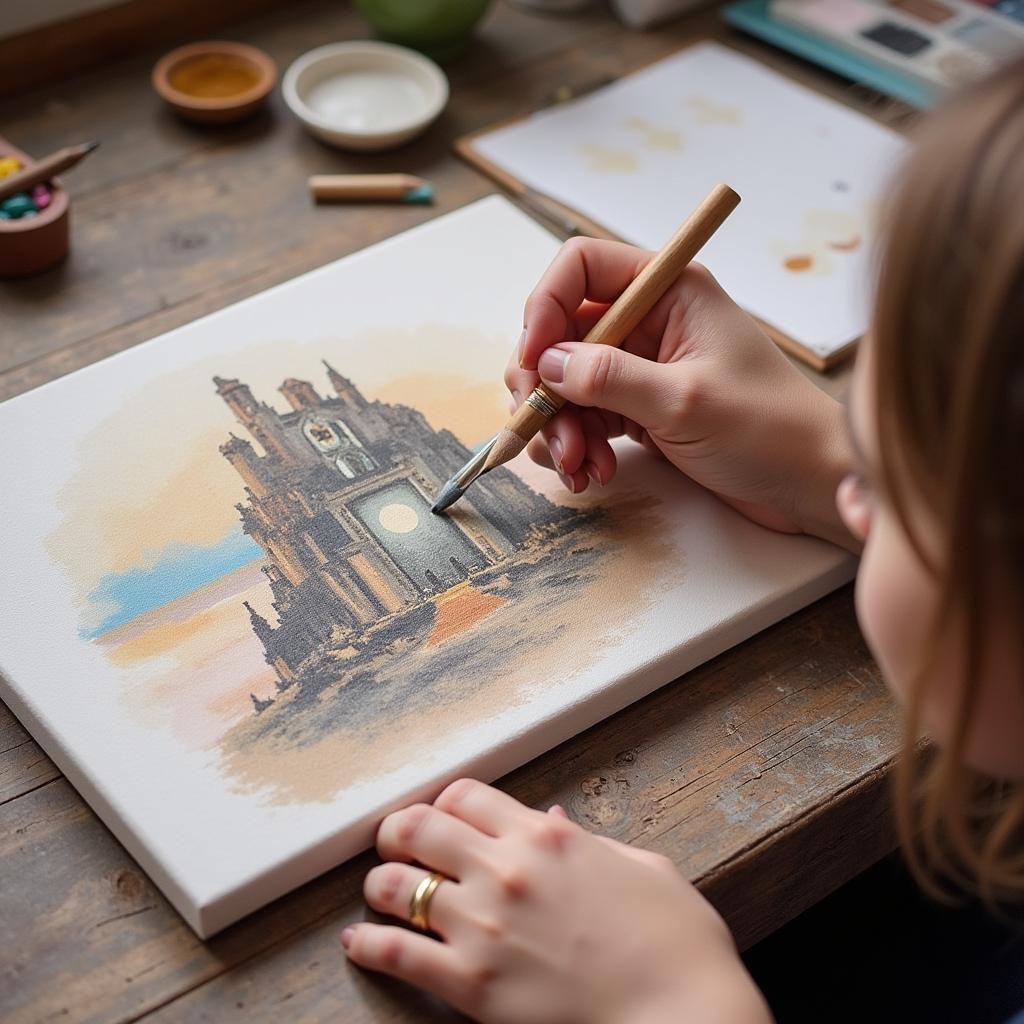Capturing the Beauty of Spring Landscape Art
Spring Landscape Art evokes a sense of renewal and the vibrant awakening of nature. From the first buds of color peeking through the thawing earth to the explosion of blossoms painting the world anew, spring offers a rich tapestry of inspiration for artists. Whether you’re a seasoned painter or just beginning to explore your artistic talents, capturing the essence of spring in your landscapes can be a truly rewarding experience. Let’s dive into the world of spring landscapes and discover how you can translate the magic of the season onto your canvas.
With its vibrant colors and renewed life, spring has always been a favorite subject for artists. From traditional oil paintings to modern digital art, there are countless ways to express the beauty of this season. But how do you truly capture the magic of spring landscapes? What techniques and approaches can you use to bring your artistic vision to life? This article will explore the various ways to create compelling spring landscape art, from understanding composition and color palettes to utilizing different mediums and techniques. If you’re fascinated by the beauty of wildflowers, check out texas wildflower art for inspiration.
Exploring the Palette of Spring
The colors of spring are a symphony of vibrant hues, from the delicate pastels of early blossoms to the rich greens of new foliage. Think of the soft blush of cherry blossoms against a clear blue sky, the vibrant yellows of daffodils dancing in the breeze, or the verdant greens of a freshly sprung meadow. This is your palette for spring landscape art. How can you harness this riot of color effectively?
One key is to understand color theory and how different hues interact with each other. Consider using complementary colors to create contrast and visual interest, or analogous colors for a more harmonious and serene effect. Experiment with different shades and tones to create depth and dimension in your work. Remember, the colors you choose will set the mood and atmosphere of your spring landscape.
Utilizing Color Theory in Your Spring Landscapes
Understanding color theory is crucial for creating effective and impactful spring landscape art. By understanding how colors interact, you can create a sense of harmony, contrast, or even tension in your work. Experimenting with different color combinations can lead to surprising and beautiful results.
Composition: Framing Your Spring Scene
The composition of your spring landscape art is just as important as the colors you choose. How you arrange the elements within your artwork will determine how the viewer’s eye moves across the scene. Think about the rule of thirds, leading lines, and the use of negative space to create balance and harmony. Do you want to focus on a single blooming tree, a sprawling meadow, or a cascading waterfall? Your composition will guide the viewer’s gaze and tell the story of your spring landscape.
Creating Depth and Dimension in Your Composition
Creating depth and dimension is key to bringing your spring landscape art to life. Techniques like atmospheric perspective, where objects in the distance appear lighter and less detailed, can help to create a sense of depth. Overlapping elements and varying the size of objects can also contribute to a more three-dimensional feel. For example, a larger tree in the foreground can be contrasted with smaller trees in the background, instantly creating a sense of distance and scale. You can also find inspiration in the unique and intriguing world of as above so below art.
Choosing Your Medium: From Traditional to Digital
From traditional watercolors and oils to the vast possibilities of digital art, the medium you choose will greatly influence the look and feel of your spring landscape art. Each medium has its unique characteristics and challenges. Watercolors can create a light and airy feel, while oils allow for rich textures and blending. Digital art opens up a world of possibilities, from photo manipulation to creating entirely new worlds from scratch. Explore different mediums to find the one that best suits your style and the story you want to tell.
Embracing Digital Tools for Spring Landscapes
Digital art tools offer an exciting new frontier for creating spring landscape art. Software like Photoshop and Procreate provide a vast array of brushes, textures, and effects that can help you achieve stunning results. You can experiment with different blending modes, layer styles, and digital filters to create unique and expressive pieces. The ability to undo and redo actions allows for greater experimentation and freedom. If you’re looking for something different, consider exploring modern art of animals for a fresh perspective.
For those seeking a solitary artistic escape, capturing the essence of alone at last art within a spring landscape could be particularly poignant. This combination offers a unique perspective, exploring themes of solitude and renewal in the natural world.
 Digital Spring Landscape Art Depicting a Vibrant Meadow
Digital Spring Landscape Art Depicting a Vibrant Meadow
Capturing the Essence of Spring: Light and Atmosphere
Light plays a crucial role in conveying the feeling of spring. The soft, diffused light of early spring mornings or the warm glow of a spring afternoon can dramatically impact the mood of your landscape. Consider the direction of the light source and how it casts shadows and highlights. The way you capture the light will be essential in conveying the essence of spring. The air itself seems to shimmer with a renewed energy, and capturing this atmosphere in your art is key to creating a truly captivating spring landscape. Perhaps you’d enjoy the playful and nostalgic style of blues clues clip art as another source of inspiration.
In conclusion, capturing the beauty of spring landscape art is a journey of exploration and discovery. By understanding color, composition, medium, and light, you can create stunning works that evoke the magic of the season. Whether you prefer traditional methods or the limitless possibilities of digital art, let the vibrant colors and renewed life of spring inspire your creative journey.
FAQ
-
What are some common motifs in spring landscape art? Blooming flowers, budding trees, flowing water, and vibrant green foliage are all common motifs.
-
What colors are typically associated with spring landscapes? Pastels, vibrant greens, blues, and yellows are frequently used to represent spring.
-
What are some tips for composing a spring landscape painting? Consider the rule of thirds, leading lines, and the use of negative space to create a balanced and engaging composition.
-
What are some popular mediums for spring landscape art? Watercolor, oil paint, acrylics, and digital painting are all popular choices.
-
How can I capture the light and atmosphere of spring in my art? Pay attention to the direction and quality of light, and use color and brushstrokes to convey the feeling of a renewed and vibrant atmosphere.
-
How can I create depth in my spring landscape art? Utilize techniques such as atmospheric perspective, overlapping elements, and variations in size and detail.
-
Where can I find inspiration for my spring landscape art? Observe nature firsthand, study the works of other artists, and explore online resources for ideas and inspiration.
Need assistance? Contact us 24/7 at Phone: 02462573573, Email: danteum@gmail.com or visit us at Savico Megamall, 7-9 Đ. Nguyễn Văn Linh, Gia Thụy, Long Biên, Hà Nội 10000, Việt Nam.



